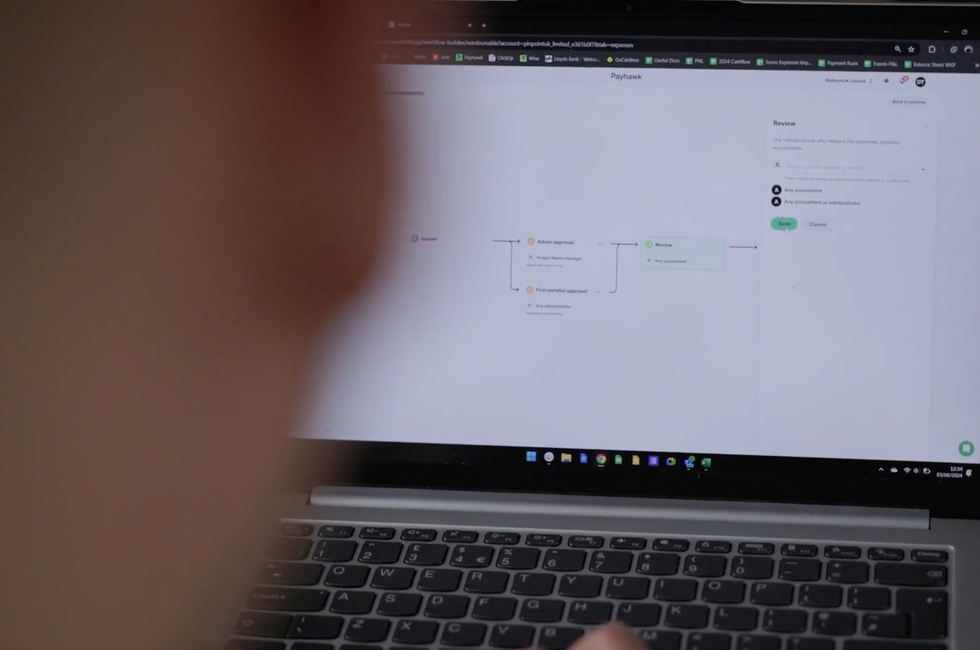
The eInvoicing landscape in the European Union: A complete guide



eInvoicing regulations are rapidly being adopted across the European Union, driving businesses to transition from traditional paper invoicing to more efficient and compliant digital processes. For companies like yours, this shift offers substantial benefits beyond regulatory compliance, such as enhanced cost efficiency, operational effectiveness, and improved financial workflows. This article provides a detailed analysis of eInvoicing in Europe, including regulations, benefits, implementation strategies, and the future outlook.
By submitting this form, you agree to receive emails about our products and services per our Privacy Policy.
eInvoicing in a nutshell
What is eInvoicing?
eInvoicing refers to generating, transmitting, receiving, and storing invoices in a structured digital format, typically XML or UBL. Unlike traditional paper invoices or unstructured digital formats like PDFs, eInvoices let you leverage automated processing, reducing manual errors and inefficiencies.
Three key differences between traditional invoicing and eInvoicing
- Format: eInvoices use structured digital formats, while traditional invoices can be paper-based or unstructured digital documents
- Processing: eInvoices support automated processing, whereas traditional invoices often require manual handling
- Transmission: eInvoices are often transmitted electronically through secure networks, unlike traditional invoices, which may rely on postal or email services
For more on automation, check out the article on our smart data extraction with OCR technology to learn how it improves accuracy in invoice processing.
And what if you’ve already digitised your accounting to save time and cut costs? Is there a difference between eInvoicing and digital invoicing?
eInvoicing vs. digital invoicing
- Standardisation: eInvoicing employs a standardised format, ensuring compatibility across your different systems. In contrast, digital invoicing may use various non-standard formats, such as PDFs, which can vary from supplier to supplier, complicating processing and integration
- Automation: eInvoicing supports full automation from creation to processing, unlike digital invoicing, which may still involve manual steps
- Compliance: eInvoicing is often regulated and follows strict compliance standards, unlike some digital invoicing methods
How to unlock effortless accounts payable automation

The biggest benefits of eInvoicing
eInvoices cut out paper, printing, and postage, directly reducing operational costs. Automated processes also minimise delays and errors, lowering costs even further.
eInvoicing also provides a clear and auditable trail of transactions, reducing the risk of fraud and error. Additionally, automated invoice processes will reduce your administrative workload, allowing your business to focus on more impactful activities.
Standardised eInvoicing also facilitates seamless cross-border transactions, further promoting international trade within the EU.
Faster payment processes
eInvoicing speeds up payment cycles by reducing the time you would have spent on manual data entry and error correction, facilitating faster payments. Additionally, eInvoicing ensures faster invoice delivery than paper or email, eliminating uncertainties about whether the invoice has been received.
Boosting Business-to-Government (B2G) e-procurement
Mandatory eInvoicing provides a clear, auditable trail of transactions, reducing the risk of fraud and enhancing regulatory compliance. It also facilitates better cross-border trade by standardising invoicing practices across the EU.
Environmental sustainability
eInvoicing can even boost your sustainability efforts. If you have previously relied on traditional (paper) invoice methods, eInvoicing will quickly reduce your paper consumption.
Digital transformation doesn’t need to begin and end with eInvoicing. Find out more about our CO2 reporting, expense management, and spend control features, all of which further enhance transparency and efficiency.
eInvoicing regulations in Europe
The European Union has introduced several directives to promote and standardise eInvoicing across member states. The most notable is the Electronic Invoice Directive 2014/55/EU, which mandates eInvoicing in public procurement across the EU. This directive aims to harmonise eInvoicing processes, ensuring interoperability and reducing administrative burdens.
In brief: The development of eInvoicing in the EU started with mandatory electronic invoicing for B2G transactions, where suppliers to government sectors had to use national systems. This evolved into the Business-to-Business (B2B) space, with some countries like Greece requiring real-time invoice reporting to national systems before implementing a transfer layer to manage invoice exchanges between issuers and receivers.
Other countries, such as France and Romania, bypassed the real-time reporting phase and directly established the transfer and status tracking mechanisms.
Need to know: Mandatory B2B eInvoicing timelines and regulations in key countries.
- France: Electronic invoicing will be required starting in 2026, with a phased approach. Large companies and mid-sized companies (ETI) will need to comply from September 1, 2026, while small and medium-sized enterprises (SMEs) and very small enterprises (TPE) will join the mandate from September 1, 2027. Businesses have the option to use Chorus Pro, the Public Invoice Portal (PPF), for public sector transactions, or they can choose from certified Partner Dematerialisation Platforms (PDPs) for both B2B and B2G invoices
- Spain: Electronic invoicing between companies and self-employed individuals will be required for 2025-2026, following the “Ley Crea y Crece” regulation
- Germany: Companies must be able to receive electronic invoices starting January 2025. B2B eInvoicing becomes mandatory in 2027 for large companies with over €800,000 turnover and January 2028 for smaller businesses with less turnover
- Belgium: Mandatory B2B eInvoicing starts in January 2026
- Netherlands: B2G eInvoicing has been mandatory since 2017, with no current mandate for B2B eInvoicing due to low VAT fraud levels
Continuous Transaction Controls and compliance
eInvoicing regulations mandate the real-time or near-real-time reporting of your invoicing data, known as Continuous Transaction Controls (CTC).
There are two main types of CTC models:
- Clearance models: Invoices must be cleared by tax authorities before being sent to recipients.
- Reporting models: Invoices are reported to tax authorities in real-time or periodically after issuance
Your business must undergo conformance testing to ensure compliance with eInvoicing standards. This testing process validates that your eInvoicing systems and processes meet the necessary technical and regulatory specifications.
Need more insights on compliance? Explore our real-time reconciliations and how they can simplify your financial operations.
How to implement eInvoicing
The requirements are quite straightforward so far — but what about the implementation? And how can you ensure you get it right?
Choose the right eInvoicing solution
Select a solution that’s compatible with your existing systems, complies with local regulations, and can scale with your business needs.Ensure legal compliance
Make sure your eInvoicing solution meets all legal requirements and includes mandatory fields like supplier details, VAT information, and invoice amounts.Address technical barriers
Anticipate challenges such as system integration, data security, and employee training and address them proactively.Securing eInvoices
Implement measures like encryption, secure data transmission, and access controls to protect sensitive information.
Need help choosing the right finance tools? Check out our accounts payable features and how they integrate with your financial systems.
The future of eInvoicing in Europe: Proposed changes and updates
The European Union is continuously evolving its eInvoicing regulations, with upcoming changes expected to further streamline processes and enhance compliance across member states. One of which includes:
The ViDA Proposal
The ViDA (VAT in the Digital Age) proposal is likely to influence the future of digital invoicing, pushing for greater harmonisation and mandatory eInvoicing across all sectors.
Stay updated on the latest features that support multi-entity accounting here.
How to plan your eInvoicing transition with Payhawk
At Payhawk, we’re actively developing comprehensive eInvoicing solutions that will integrate seamlessly into our platform, enabling streamlined financial workflows and ensuring compliance with country-specific regulations.
Here’s what we’ll cover, along with some of big additional benefits:
- Compliance and future capabilities
Understanding the critical importance of compliance, we’re designing our eInvoicing solution to meet regulatory standards across different jurisdictions. Our platform will support standardised XML formats, ensuring seamless integration and interoperability. And once implemented, we’ll also offer real-time reporting under Continuous Transaction Controls (CTC), simplifying compliance with local laws.
- Streamlining financial workflows
At Payhawk, we already empower businesses like yours to manage and process expenses efficiently. You get:
-Consolidated expenses and related documents in one place
-Customisable approval workflows
-Automatic payments and invoice reconciliations within your ERP system
-And much more, all to help you streamline your financial processes
Preparing for the transition
We recognise that transitioning to a new system can be challenging. And as we work on incorporating eInvoicing into our platform, we’re dedicated to providing clear, actionable guidance for a smooth implementation. Our commitment includes continuous training and customer support to ensure your team is fully prepared.
Looking ahead
At Payhawk, we’re committed to being your trusted partner throughout this transition. Our focus is on developing solutions that not only simplify your financial workflows but also keep you ahead of evolving regulatory requirements.
Ready to simplify your company’s expense management? Talk to one of our experts to learn more about how eInvoicing will affect your business.
Daniel uses his technical background to utilise the advanced ML and AI models as tools in our product. He currently spearheads the Expense Automation product area, focusing on maximising efficiency by minimising manual intervention in expense management processes. He is committed to a sustained effort of delivering value and a seamless expense experience for our customers by employing the most appropriate technological solutions.
Related Articles


The nine best accounts payable solutions & their impact

